“I was really impressed by the level of work and the variationof submissions,” says juror Sacha Stejko. “There was a wide array of different subject matters, and it was great to see the photographer’s individual voice coming through in the images.”
“I observed how different photographers were exploring the boundless possibilities within the realm of photography,” juror Kenji Aoki says.
“There were many surprising and creative images and concepts that were expertly and often sensitively executed,” says juror Christine Dewairy.
“Some real interesting shots stood out by telling a complete story or playing with the norms of portraiture,” juror Phil Copithorne says. “Some nice editorial [entries] proved that it’s always about being in the right place at the right time.”
“The quality and production values across the entries were really high,” says juror Miles English.
“Overall, I felt that most photos were very professional, very well lit and sharp—but also very thought out,” juror Sybren Kuiper says.
I asked the jurors what they found most surprising about this year’s entries.
“I was pleasantly surprised to see many artists using new tools like AI modeling within their photographic work,” says juror Jennifer Greenburg. “In order to keep our discipline moving forward, we need to find ways to successfully use everything possible. The panic and fear regarding AI within photography has become a little tiresome, and I am glad to see the ways those who submitted used it to complement their photographic vision.”
“I was surprised that there were not more socially concerned entries,” juror Ursula Damm says.
“It was both inspiring and refreshing to see such wonderful use of natural light, compared to images being overlit or flashed to hell,” says juror Joe Karably. “While the latter has its place and importance, I have always loved photography that’s intimate in approach but grand in scope, and that’s what I saw a lot of in this year’s work.”
In the interest of balanced insight, I also asked the jurors to describe their biggest disappointments with this year’s entries.
“Some of the fashion could have been more directional and interesting, and styling could have been better in this category,” English says.
“As a viewer, I find it difficult to connect with photographs that have been heavily manipulated in post-production, where elements have been created and not photographed,” says Stejko. “I love photography for the insight it provides and the emotional impact it can have on someone. When an image's elements have been too overly produced and don’t necessarily add to the narrative of the piece, I struggle to feel that emotional connection and feel a bit deceived in trying to guess what is real and what isn’t.”
“I felt there was not very much adventure, experimentation or risk taking,” Kuiper says. “Maybe that’s only logical as a lot of photos were assigned—or so I thought. Of course, I say this with the utmost respect for the photographers.”
“I sense that many works were confined within existing frameworks, lacking in innovation,” says Aoki. “Embracing novelty entails venturing beyond these constraints, pushing boundaries further.”
“It is apparent that imagemakers really need to push concept and execution now more than ever,” Copithorne says. “It is relatively easy to make a great-looking image, but traditional approaches to portraiture or landscapes or food, for example, are just not enough anymore.”
Lastly, I asked the judges where they think the field of photography is going.
“The notion that ‘photos represent absolute truth’ is on the brink of dissolution, paving the way for a world where the distinction between reality and fantasy becomes increasingly ambiguous,” says Aoki, “like a painter effortlessly sketching on a blank canvas, liberating creativity from the confines of strict realism.”
“It continues to move away from the traditions behind image-making,” Copithorne says. “Technology has made imagemaking high quality and immediate. Photography will have to rely on more than execution to stand out.”
“Obviously AI will allow retouching to reach new standards and also to replace photography altogether in some cases,” says English. “The question will be: Is it photography anymore? There’s usually a reaction to new technology, so maybe [we will see] a return to analog cameras and darkroom prints.”
“I think the field of photography is finding its groove in the digital realm and, in a sense, going back to its roots,” Dewairy says. “The effects and creative work that were once done in a lab are now being done in post, but the composition, concepts and perspectives are still rooted in the camera or the lens, using color, light and framing.”
“Shooting with film has seen a resurgence in popularity due to its imperfections and the honesty of the images it produces,” says Stejko. “I think there will be a shift in how much post- production is used, as people may start rejecting images that appear too perfect or overly manipulated by AI. In today’s world where unrealistic beauty standards have been criticized and questioned, we can already start to see a move toward more authentic, unfiltered images in e-commerce and brand advertisements. Photography is a powerful tool for communicating humanity and connecting with others, free from the constraints of filters and artificial intelligence.”
“Photography is an art form and a profession that needs to be recognized and treated as such by the various industries that ‘utilize’ and need it,” Damm says. “I believe photography in its true form will remain relevant.”
“It’s easier than ever to create an image that is, on the surface, acceptable,” says Karably. “I think in a way this has truly made the process return to its roots: good ideas, good composition, good lighting. Those fundamentals are the core of every great image. They will continue to be what separates art from the noise.”
A minimum of six out of nine votes was required for a project to be awarded in this year’s competition. Judges were not permitted to vote on projects with which they were directly involved; I voted in their stead. I would like to extend our grateful appreciation to our jurors for their conscientious efforts in selecting our 65th Photography Annual. — Patrick Coyne ca
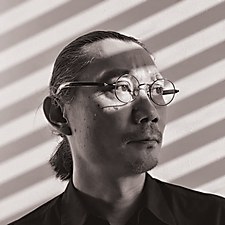
Kenji Aoki is a Tokyo-based photographer specializing in still lifes using a geometric and analytical perspective. Aoki spent his formative years studying various design disciplines at Kuwasa Design School, but it was photography that changed his world. He has authored two books on his work, AGITO (BALLS Corporation) in 2003 and SPACE (Kehrer) in 2019, and has exhibited in China, Japan, the Netherlands and the United States. Since 1991, Aoki has worked with many clients in the United States and Europe, including The New York Times Magazine and TIME, and has received awards from American Photography, The Art Directors Club and Communication Arts.
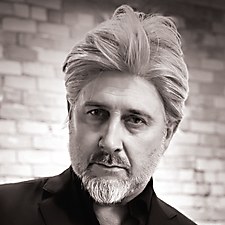
Phil Copithorne is a founding partner and creative lead at C&B Advertising in Calgary, Canada. In its twelve-year history, C&B has become one of Alberta’s top creative agencies, known for building brands in travel, retail and entertainment. Over the course of almost 20 years, Copithorne and partner Leigh Blakely have been the strategic, planning and creative forces behind some of the most successful, highest profile and longest lasting brands in Alberta, and the agency has received awards for its work from Ad Rodeo Association, Advertising & Design Club of Canada, Applied Arts, Communication Arts and Strategy’s Marketing Awards.
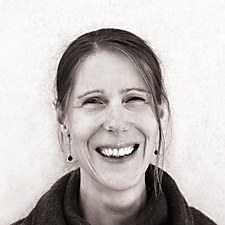
Ursula Damm is the founder of the design firm Dammsavage Inc. and the creative director of Daylight Books, both based in New York. Her work is influenced by her passion for art, music and storytelling, as well as her commitment to addressing social issues. In her career, Damm maintains a balance between art and not-for-profit work, which gives her the opportunity to collaborate with accomplished artists and notable organizations like the United Nations and its various departments. She is the recipient of various awards including from the Art Directors Club, the German Design Award for excellence in art book design, Graphic Design USA and Red Dot.
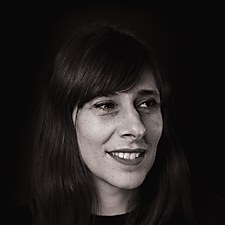
Christine Dewairy is the creative director of Maclean’s magazine in Toronto, Canada.Dewairy began her 23-year career as an art director and designer at the National Post, where she collaborated on the creation of and art directed the Weekend Post and was both fashion editor and art director for Saturday Post Fashion. Prior to her role at Maclean’s, she was art director for Toronto Life and Canadian Business. She is passionate about storytelling and design and has garnered numerous awards by the Art Direction and Design Club of Canada, the National Magazine Awards, and the Society of Publication Designers.
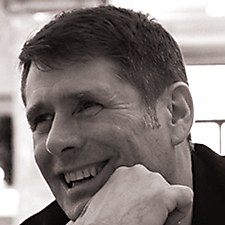
Miles English is the creative director of The Red Bulletin, a lifestyle magazine published by Red Bull Media. An early career in the record business led to a graphic design degree at Central Saint Martins in London and subsequent work designing record covers. Attracted to the energy of mid-1990s magazines, he started at Loaded magazine before moving on to GQ and Jack. His freelance experience includes design stints at Elle, the Guardian Magazine, Harper’s Bazaar, the Observer Magazine, Tatler, Vogue and Wallpaper*. In 2006, he started at Red Bull as art director for The Red Bulletin and has designed books and other projects for the company.

Jennifer Greenburg is an associate professor of photography and the program director of photography at the University of the Arts in Philadelphia, Pennsylvania. She holds an MFA from The University of Chicago and a BFA from the School of the Art Institute. She was an artist in residence at Light Work in Syracuse, New York, and held a fellowship at the Museum of Fine Arts Houston. Greenburg’s work is in the permanent collections of The Museum of Contemporary Art Tucson, The Museum of Contemporary Photography, The Museum of Fine Arts Houston, The Museum of Photographic Arts, The National Gallery of Ontario and The Santa Barbara Museum of Art.
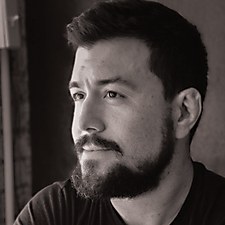
Joe Karably is a Jacksonville, Florida–based freelance director, cinematographer and editor who has lensed commercial and documentary works across the television, advertising, corporate and nonprofit spheres for more than a decade. Following his decision in 2013 to work as a freelance filmmaker and creative, Karably has gone on to create inspiring and award-winning works for clients such as Florida-based healthcare network Baptist Health, MD Anderson Cancer Center, PBS and multiple Florida-based tourism agencies, among others. His work has been featured by outlets such as The Atlantic, Communication Arts, the National Endowment for The Arts and PBS.
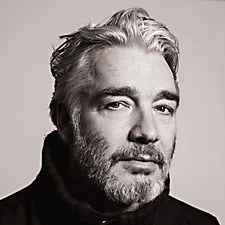
Sybren Kuiper is a graphic designer based in The Hague, Netherlands. Kuiper works almost exclusively for a wide range of cultural clients. For the first half of his career, he predominantly designed posters, flyers and programs for theater productions and festivals. For the last fifteen years, he has worked on an ever-growing oeuvre of books and catalogs commissioned by museums, publishers, photographers and other artists. He also designs corporate identities and exhibitions and is a part-time teacher and art director. His work has been widely recognized nationally and internationally, and he has been a member of Alliance Graphique Internationale since 2017.
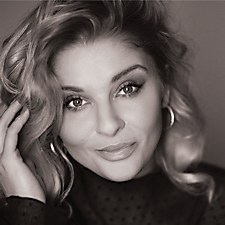
Sacha Stejko is an Auckland, New Zealand–based advertising photographer represented by Image Driven Content. Stejko’s commercial work ranges from artful visual storytelling to raw explosive action. She has received recognition from Capture magazine, Communication Arts, the International Photography Awards and the Spotlight Awards. In 2021, she was chosen to represent Canon as one of the fifteen Canon Masters across Australasia and was ranked in Lürzer's Archive Top 200 Best advertising photographers. In 2023, she was recognized as one of the 23 World’s Best Sport Photographers by The Agents Club, a network for visual artist representation agencies worldwide.